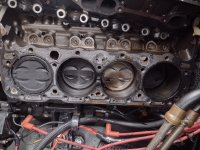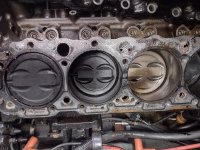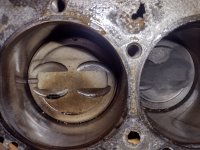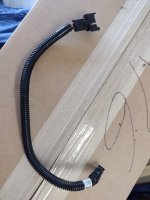Here are some photos of the tops of the pistons. The leftmost picture is an overall shot of the 1-3-5-7 bank with #1 on the left side. The middle picture is a view of cylinders 1,3 &5 and the rightmost picture is a view of #5 on the left and #7 on the right.
The piston top of cylinder 5 has almost no carbon buildup which is odd. I wonder if I have an exhaust manifold leak that is slowly leaking water into cylinder #5. Would that have caused the "fire slotting" of the block?
At any rate, I am going to test the exhaust manifolds for leaks before installing the remanufactured engie as I do not want to go through this again.
While the engine is out I think it would be prudent to replace the coupler as if it goes, the engine would have to come out again to replace that. At 26 years old and 1750 hours, I think it is wise to replace the coupler.
The piston top of cylinder 5 has almost no carbon buildup which is odd. I wonder if I have an exhaust manifold leak that is slowly leaking water into cylinder #5. Would that have caused the "fire slotting" of the block?
At any rate, I am going to test the exhaust manifolds for leaks before installing the remanufactured engie as I do not want to go through this again.
While the engine is out I think it would be prudent to replace the coupler as if it goes, the engine would have to come out again to replace that. At 26 years old and 1750 hours, I think it is wise to replace the coupler.

























